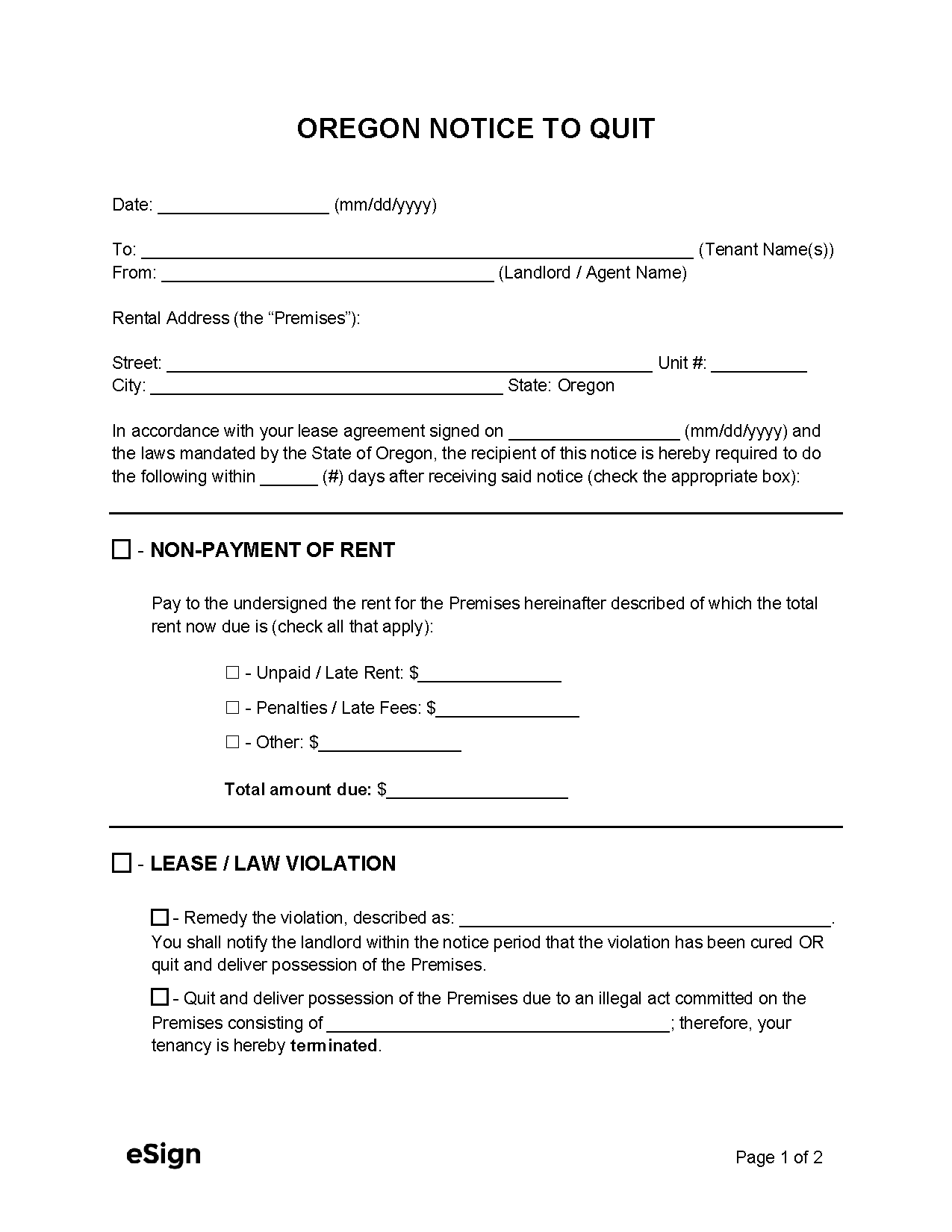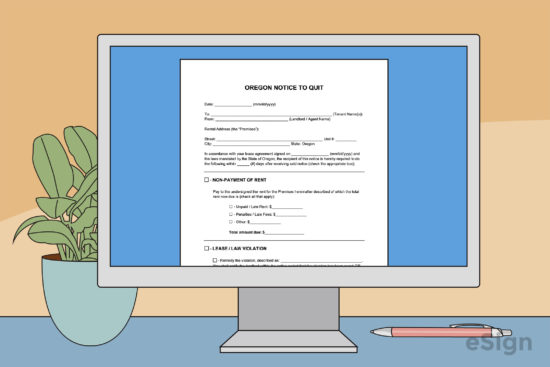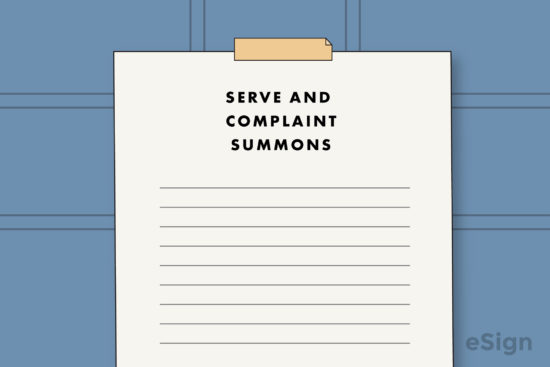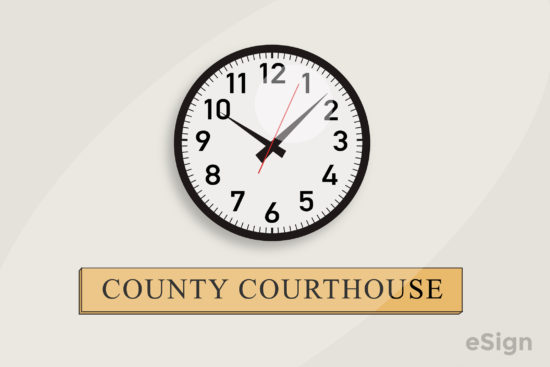Eviction Notices: By Type (6)
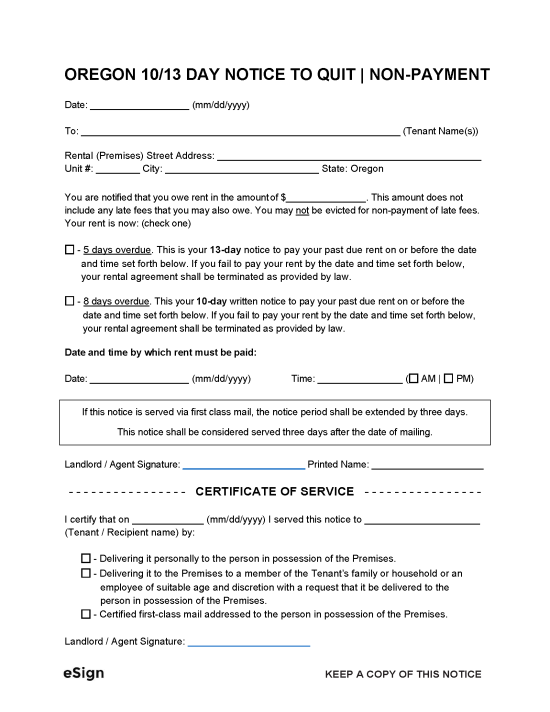 10/13-Day Notice to Quit for Non-Payment – Served on a tenant who has missed paying rent, giving them either 10 or 13 days to pay or vacate. 10/13-Day Notice to Quit for Non-Payment – Served on a tenant who has missed paying rent, giving them either 10 or 13 days to pay or vacate.
Download: PDF, Word (.docx), OpenDocument |
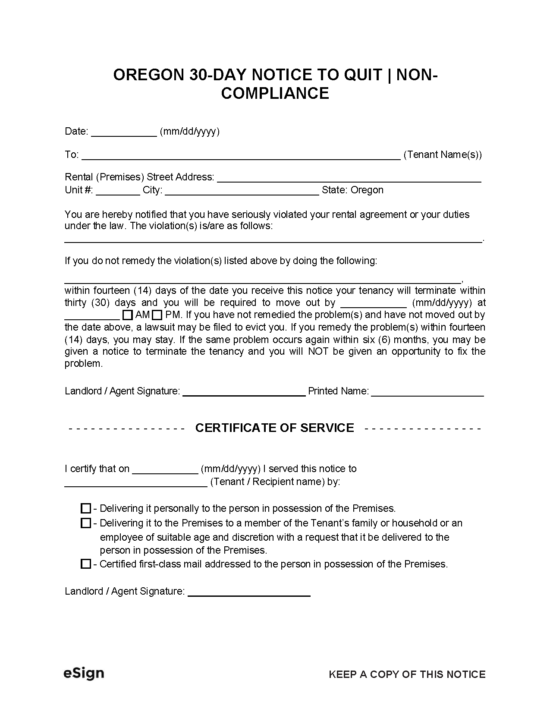 30-Day Notice to Quit for Non-Compliance – Allows a tenant to cure a violation (if applicable) or move out within 30 days. 30-Day Notice to Quit for Non-Compliance – Allows a tenant to cure a violation (if applicable) or move out within 30 days.
Download: PDF, Word (.docx), OpenDocument |
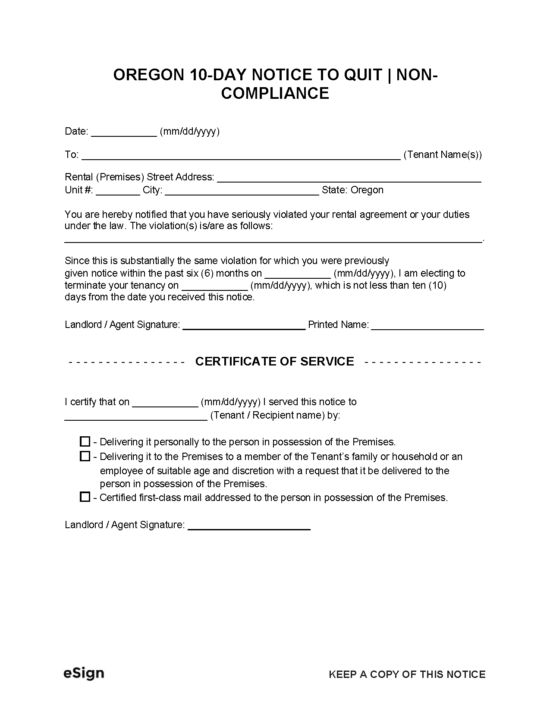 10-Day Notice to Quit for Non-Compliance – Requires a tenant to move out within 10 days due to a repeat violation. 10-Day Notice to Quit for Non-Compliance – Requires a tenant to move out within 10 days due to a repeat violation.
Download: PDF, Word (.docx), OpenDocument |
 30-Day Notice to Terminate Month-to-Month – A form used to terminate a month-to-month tenancy. 30-Day Notice to Terminate Month-to-Month – A form used to terminate a month-to-month tenancy.
Download: PDF, Word (.docx), OpenDocument |
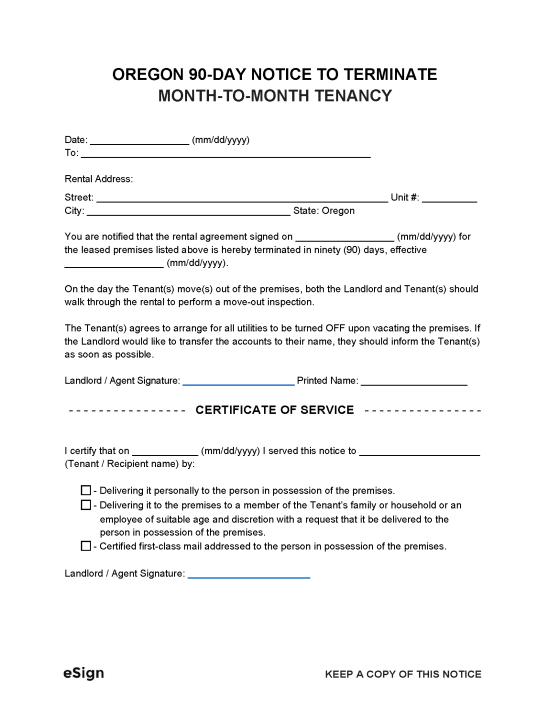 90-Day Notice to Terminate Month-to-Month – A 90-day lease termination notice for specific cases only. 90-Day Notice to Terminate Month-to-Month – A 90-day lease termination notice for specific cases only.
Download: PDF, Word (.docx), OpenDocument |
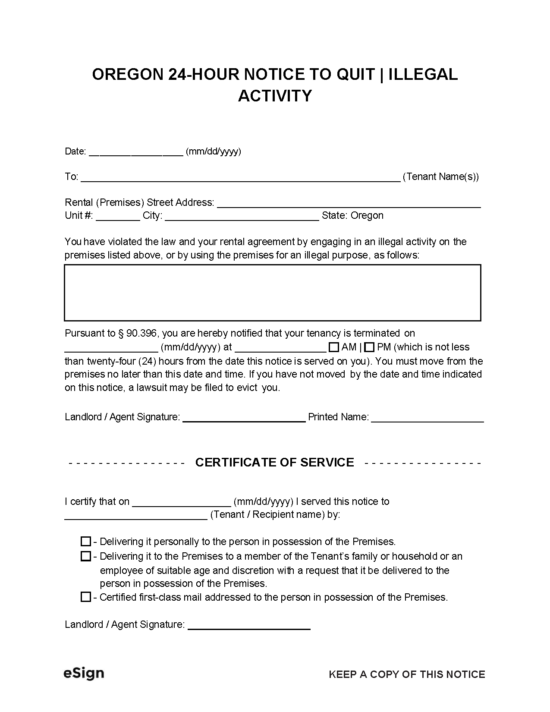 24-Hour Notice to Quit for Illegal Activity – Served by a landlord to terminate the lease of a tenant who has engaged in illegal activity. 24-Hour Notice to Quit for Illegal Activity – Served by a landlord to terminate the lease of a tenant who has engaged in illegal activity.
Download: PDF, Word (.docx), OpenDocument |
Notice Requirements
Veteran Service Requirements
Landlords serving a notice on a veteran must give the contact info of a veterans’ service officer or community action agency, or a statement that this info is available by calling 211.[7]
How to Evict a Tenant in Oregon
Step 1 – Serve Notice to Quit
The eviction process begins with serving a notice to quit on the tenant in person or via first-class mail. If agreed upon in the lease, the notice can be mailed and posted on the property.
- 10/13-Day Notice to Quit for Non-Payment
- 14-Day Notice to Quit for Non-Compliance
- 10-Day Notice to Quit for Non-Compliance
- 30-Day Notice to Terminate Month-to-Month
- 24-Hour Notice to Quit for Illegal Activity
If a landlord is evicting a tenant due to non-payment, the Notice RE: Eviction for Nonpayment of Rent must be served along with the notice to quit.
Step 2 – File Complaint and Summons
If the tenant continues to occupy the property after the notice period passes, the landlord can submit a Complaint and Summons to the Circuit Court, along with three copies of the notice to quit and payment for the filing fee. The clerk will generally set a court date to take place 7 to 15 days after filing.
Step 3 – Serve Documents
The Complaint and Summons must be served on the tenant by the end of the next judicial day (a day the court is open). The forms can be served by a sheriff, process server, or any other disinterested adult.
If in-person service fails, the forms may be posted at the tenant’s unit entrance. Once completed, the server must file a Certificate of Service with the court.
Step 4 – Attend Initial Hearing
Both parties must attend the initial hearing to see if an agreement can be reached or if a trial date should be set. If unsuccessful, the tenant must file an Answer with the court, and a second hearing will be set.
In the event that the tenant vacates before the initial hearing, the landlord may either:
- Submit a signed statement to the court clerk requesting dismissal of the case; or
- Attend the hearing to request a judgment and damages from the tenant.
Step 5 – Attend Second Hearing
At the second hearing, the parties will present their cases so the judge can issue their Judgment. If the ruling is in the landlord’s favor, the judge will order the tenant to vacate and may require them to pay damages.
If the judge rules in the tenant’s favor, they’ll be able to stay on the property and will likely be entitled to damages.
Step 6 – Writ of Execution
If the tenant hasn’t left after a ruling against them, the landlord can request a Notice of Restitution from the court. The notice must be served on the tenant by a sheriff or process server, and gives the tenant four days to vacate.
If the tenant does not comply, the landlord can request a Writ of Execution from the court and submit it to the sheriff’s office for service on the tenant. The landlord and sheriff will then schedule a time for the parties to forcibly evict the tenant.
Court Forms + Resources
Forms
- Answer to a Residential Eviction
- Signed by: Tenant
- Certificate of Service
- Signed by: Server
- Notice of Restitution
- Signed by: Judge
- Notice RE: Eviction for Nonpayment of Rent
- Signed by: N/A
- Residential Eviction Complaint
- Signed by: Landlord
- Residential Eviction Summons
- Signed by: Landlord
- Residential Eviction General Judgment & Money Award
- Signed by: Judge and Server
- Writ of Execution
- Signed by: Judge
Resources

